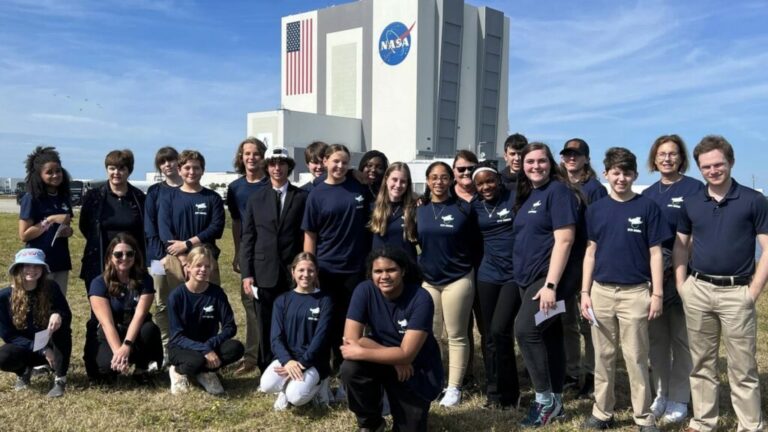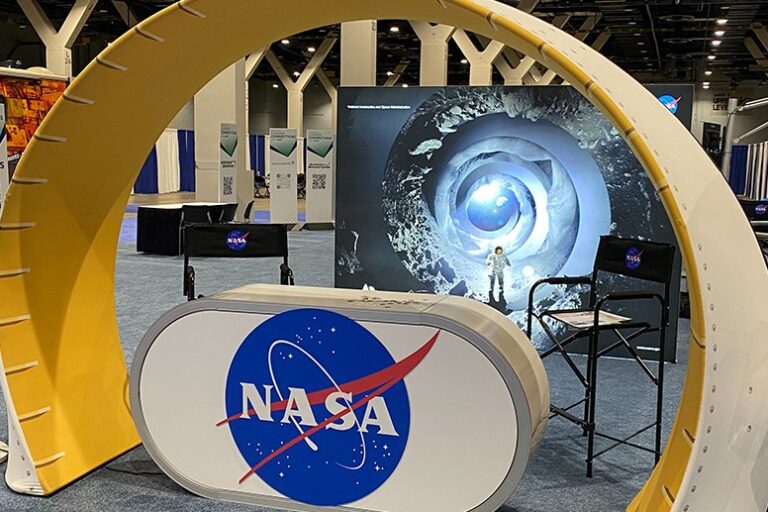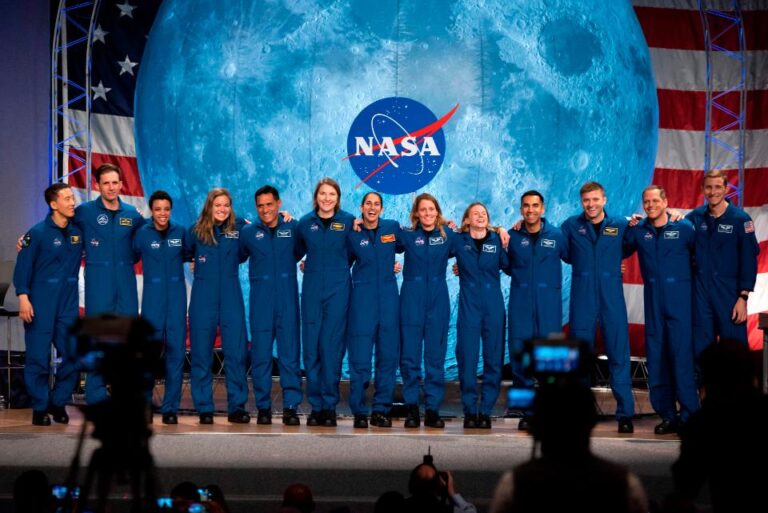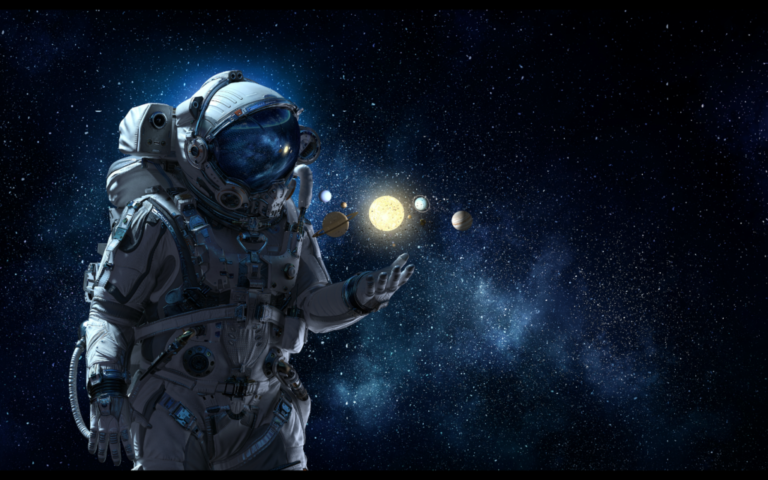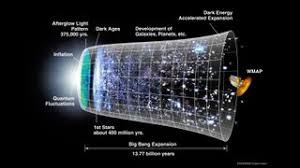
The James Webb Space Telescope (JWST), launched in December 2021, is the most powerful space telescope ever built, allowing astronomers to peer farther into the universe than ever before. Its advanced technology provides unprecedented views of distant stars, galaxies, and other celestial phenomena, offering insights into the early universe, star formation, and planetary systems.
Here’s a detailed breakdown of how far the JWST can see:
1. Seeing Deep into the Early Universe
The primary mission of the JWST is to observe the universe’s most distant objects, essentially looking back in time to when the first galaxies were forming. Due to the finite speed of light, the farther away an object is, the older the light we observe. The JWST can detect objects as far back as 13.5 billion years ago, nearly to the time of the Big Bang, which is estimated to have occurred around 13.8 billion years ago.
- Wavelength Sensitivity: One of the reasons the JWST can see so far is its sensitivity to infrared light. As light travels across the universe, it stretches due to the expansion of space (a phenomenon called redshift). JWST’s infrared capabilities make it possible to detect this stretched light from galaxies that formed billions of years ago, long before Earth even existed.
- Redshift: The JWST can observe galaxies with redshifts greater than z = 12 or even higher, corresponding to distances over 13 billion light-years. By observing these high-redshift galaxies, the telescope can study the formation of the first stars and galaxies.
2. Cosmic Distance and Time
The farthest object JWST can observe is limited not by the telescope itself, but by the universe’s history and expansion. JWST is optimized to observe the first few hundred million years after the Big Bang, peering back to when the earliest stars and galaxies ignited. These early galaxies are dim and located incredibly far away. Because of the telescope’s remarkable sensitivity and its ability to capture faint infrared light, astronomers expect it to detect:
- First Stars and Galaxies: JWST is designed to capture images of stars and galaxies that formed as early as 100-250 million years after the Big Bang.
- Reionization Epoch: This is the era when the universe transitioned from being opaque to transparent, around 500 million to 1 billion years after the Big Bang. JWST is equipped to study the detailed processes of how the universe became reionized.
3. Resolution and Sensitivity
JWST’s large primary mirror, which is 6.5 meters in diameter, gives it incredible light-gathering power. Its sensitivity is 100 times greater than its predecessor, the Hubble Space Telescope, allowing it to detect faint and distant objects in the infrared spectrum.
- Hubble vs. JWST: While Hubble can see galaxies at about 13 billion light-years away, JWST pushes this boundary even further by targeting wavelengths that are difficult for Hubble to observe. With its infrared capabilities, JWST can study the first few hundred million years of the universe, a period that Hubble has only glimpsed.
4. Planetary Systems and Exoplanet Studies
JWST will also play a significant role in the study of exoplanets—planets orbiting stars outside our solar system. It can study planetary atmospheres, potentially finding biomarkers such as water, oxygen, and methane, which could suggest the possibility of life. Though this involves shorter distances than observing galaxies, the study of exoplanets is equally crucial.
- Exoplanets: JWST is capable of detecting planets up to tens of light-years away in unprecedented detail. It can analyze the atmosphere of these planets by observing the light that filters through them during transits, providing vital information about their chemical composition.
5. Gravitational Lensing: Seeing Even Farther
In some instances, JWST will use a phenomenon known as gravitational lensing to see even farther. Massive galaxies or clusters of galaxies can bend the light from objects behind them, effectively acting as a magnifying glass. This allows astronomers to see objects that would otherwise be too faint or distant to detect.
- Lensing Magnification: In some cases, gravitational lensing can magnify the light of objects located more than 13 billion light-years away, making them observable by JWST.
6. Technological Innovation: Why JWST Can See Farther
JWST’s ability to observe such distant objects comes from several innovative features:
- Sunshield: A tennis-court-sized sunshield protects the telescope from the heat of the sun, Earth, and moon, keeping it cool enough to observe faint infrared light.
- Infrared Detectors: The telescope’s NIRCam (Near Infrared Camera) and MIRI (Mid-Infrared Instrument) allow it to observe infrared wavelengths that are key to detecting ancient and distant objects.
- Location: JWST orbits at Lagrange Point 2 (L2), about 1.5 million kilometers from Earth. This stable, isolated position provides a perfect vantage point for observing deep space without the interference of Earth’s atmosphere.
7. Limits to JWST’s Vision
While JWST is a technological marvel, there are still some practical limitations to its vision:
- Cosmic Horizon: JWST can observe as far back as the first galaxies and stars, but it cannot observe the Big Bang directly. The universe was opaque to light until about 380,000 years after the Big Bang. This period, called the cosmic microwave background, is observable in microwaves, which JWST is not equipped to study in detail (this is the realm of the Planck satellite).
- Time Limit: JWST can only see as far back as the first light-emitting objects formed after the Big Bang. The first stars are expected to have formed around 100-250 million years after the Big Bang.
Conclusion: Pushing the Limits of the Universe
The James Webb Space Telescope is designed to explore the deepest corners of the universe, helping us understand the origins of stars, galaxies, and planetary systems. Its ability to see over 13 billion years into the past, study the earliest moments of star and galaxy formation, and analyze distant exoplanetary systems makes it a groundbreaking tool for astronomy. By studying ancient light in infrared wavelengths, JWST brings us closer to answering some of the biggest questions about the nature and origins of the universe.


